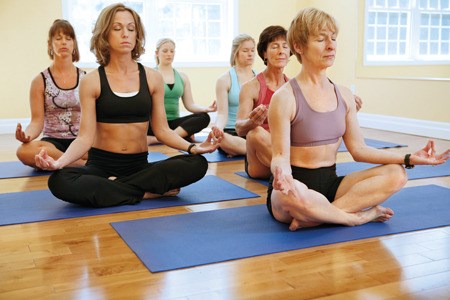 Attending a yoga class for the first time can be intimidating enough without having to decipher an ancient language in between foreign twists, bends and stances.
Attending a yoga class for the first time can be intimidating enough without having to decipher an ancient language in between foreign twists, bends and stances.
You have to pick out a new mat from a myriad of choices, test various outfits for potential gaping malfunctions and worry where to stash your wallet.
The last thing you need is for the instructor to direct poses in Sanskrit without additional instruction and definition making you feel like a total outsider.
Sanskrit is the first language of yoga. Asana in Sanskrit means to sit and simply preparing to sit was the original purpose of yoga postures. All postures developed as exercises that would help one prepare to sit and meditate for long periods.
So postures are named for their shape followed by the suffix asana. Triangle pose, for instance, is trikonasana triko, meaning triangle, followed by asana.
Sanskrit is a beautiful classical language of India and it definitely adds a fluidity and grace to a yoga instructors dialogue.
Using Sanskrit in a contemporary yoga class sets a certain traditional mood some believe through the vibrations of the words themselves.
It also pays respect to those whove evolved yoga asanas over the years through both the shared language of movement and Sanskrit.
But it would be a shame if the language yoga postures were built upon ended up being the road block that gets in ones way to begin a practice.
But, just as youll find many classes with the postures cued solely in Sanskrit, youll also find many teachers who use English names and others who provide both.
Its more likely that a teacher leading advanced classes will expect students to be familiar with the Sanskrit names than students taking a beginners class, but its still possible to study yoga for years and greatly advance your practice without deciphering one asana.
Seek out Sanskrit if hearing the language brings you joy, but if youre not comfortable with it yet, dont let the language come between you and your practice new, intermediate or advanced.
Jamie Schaab for FitnessGoop.com



